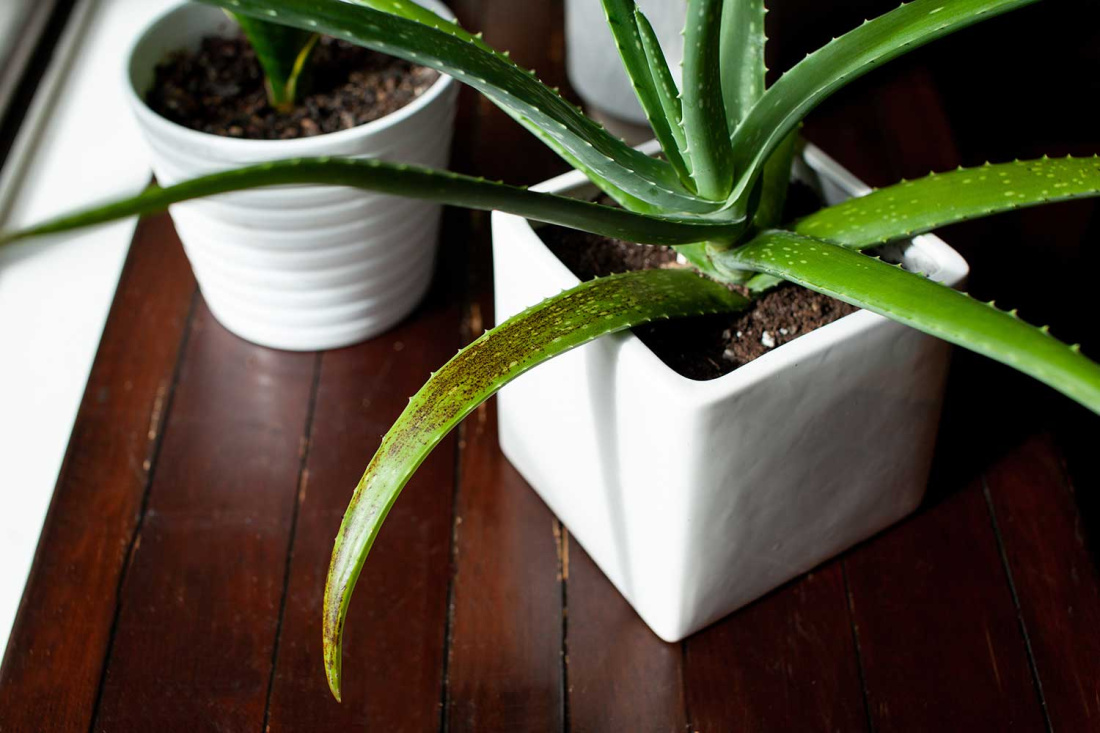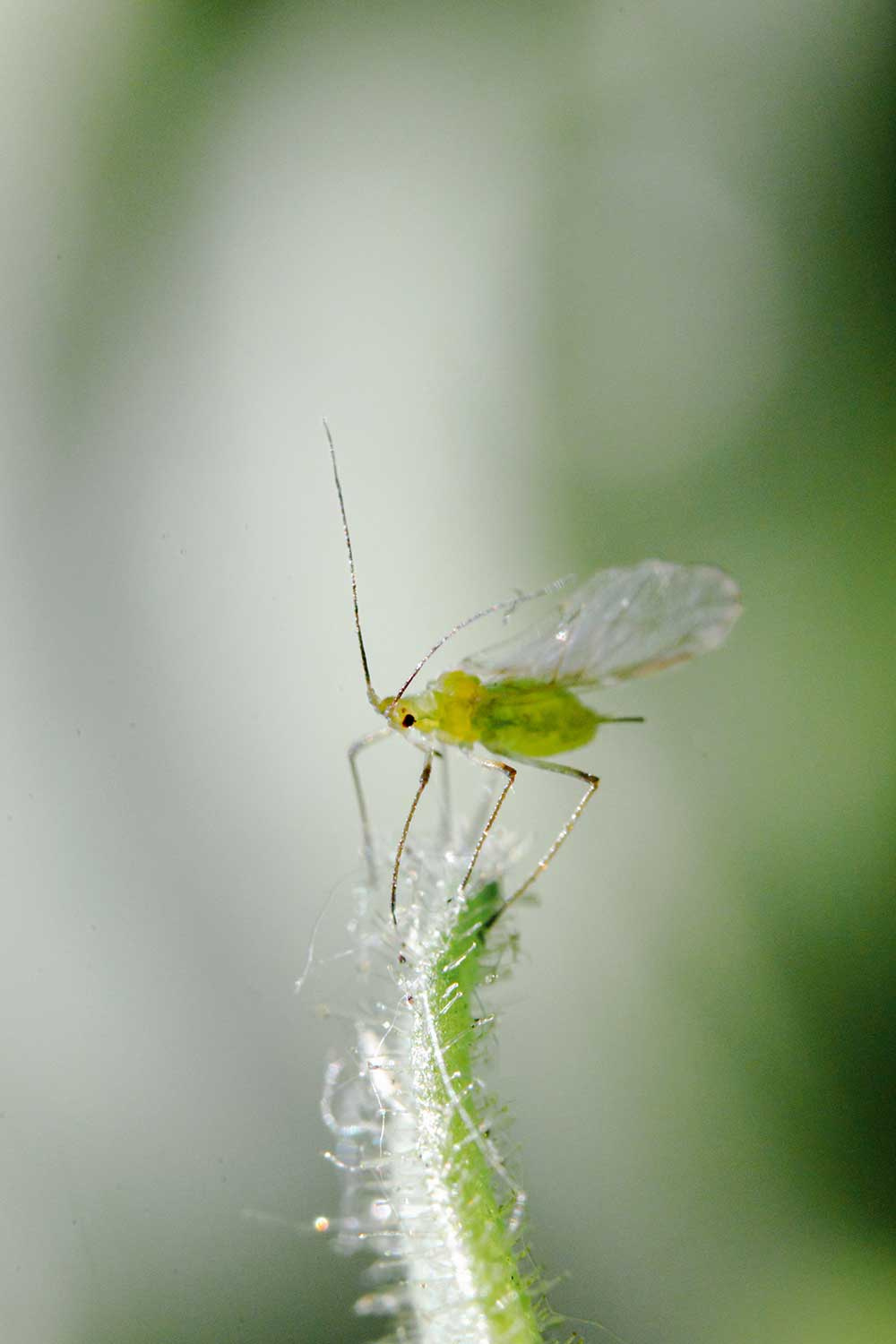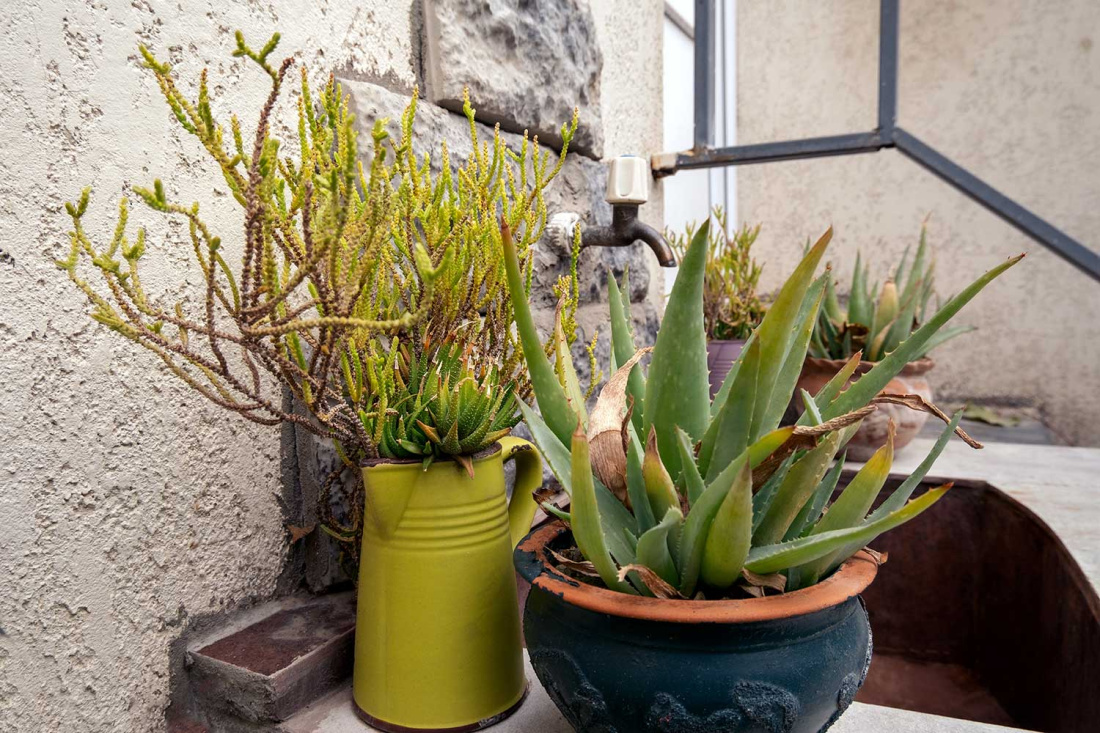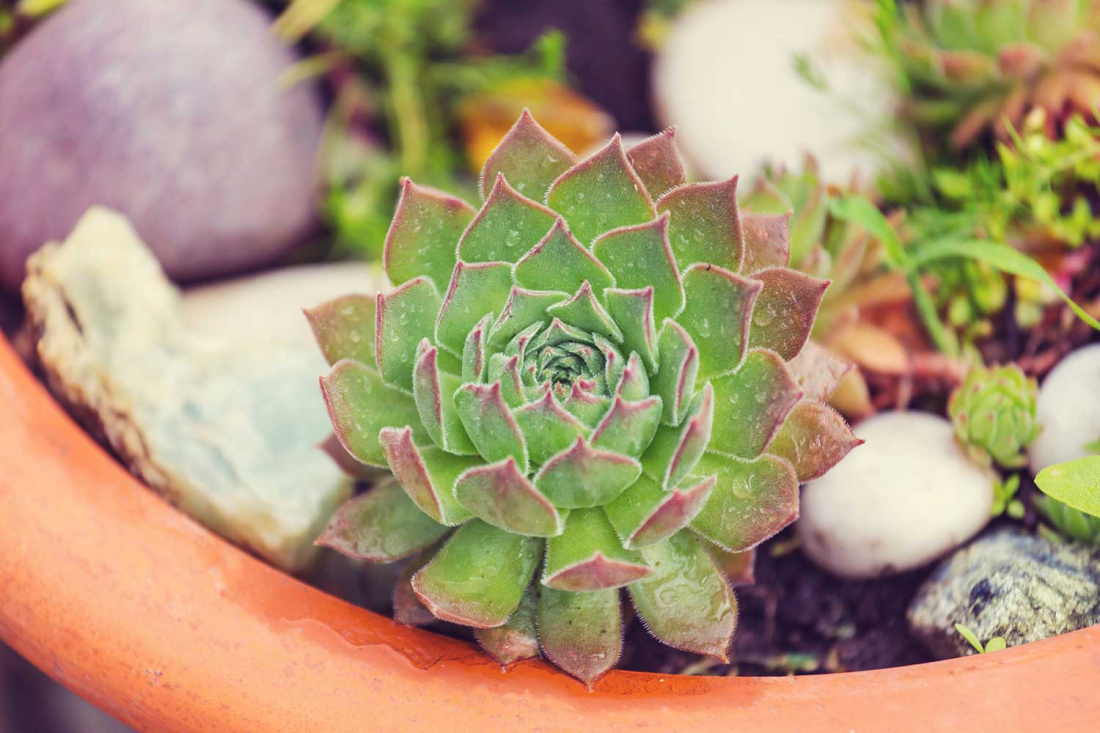It’s a pity that care and attention can kill the ones you love. Many lives have been lost in the succulent world due to one overwhelming mistake in plant care by their owners — too much water. These feisty, drought-loving plants originate from the driest areas of the world. They have adapted supremely to having irregular and small amounts of moisture. As such, receiving more water than they would in their natural habitat can cause a host of succulent overwatering problems. Here are seven signs you’re overwatering your succulents.

1. Discoloration and Falling Leaves
A common sign that you need to stop overwatering your succulents is excessive falling leaves. While leaf drop occurs naturally as the plant grows, a higher than usual level accompanied by color and leaf texture changes is a serious problem.
Leaves become yellow, turning brownish and losing their regular firmness, developing a squelchy feel. It’s a sign that too much water has caused leaf cells to swell, burst, and die. Left untreated, this can develop into dreaded root rot (more on this later).
2. Look Out for Leaf Spotting
Brown spots may indicate one or more problems with your succulents. Fungal infections, too much fertilizer, insects, sunburn, and edema, can result in unsightly spots. Edema and fungal infections result from the plant being overwatered. Certain insect species are also attracted to these moist conditions.
Much of the time, though unsightly, the plant will tolerate the relatively harmless fungi that cause leaf spotting. You should, however, keep an eye out for dangerous fungi that can cause more severe damage than leaf spotting. Anthracnose, for example, is a fungal disease causing severe damage to plants. It has the appearance of orange, pink, or red raised spots on the leaves.
3. Another Sign You’re Overwatering Your Succulents — Edema
Edema is a condition resulting in brown spots on leaves but is not caused by fungi. Edema happens when excess fluid is held by the succulent, and overwatering is the direct cause. Where the plants remain waterlogged, water pressure causes stretching and collapse of cells in the leaf. The leaf damage results in irregular blister-like lumps with a rough and uneven brown surface.

4. More Succulent Overwatering Problems — Insect Pests
Common insect pests that can attack your dry climate plants include aphids, fungus gnats, mealybugs, scale, spider mites, and whiteflies. Attracted to the moist conditions around overwatered plants, these pests damage succulents in two ways. Firstly, by sucking on the sap of the plants, insects cause direct damage and can end up destroying the succulent if not removed. Secondly, many of these insect pests release a sticky substance known as honeydew, leading to bacterial, fungus, and mold infections.
Signs of succulent insect pests include:
- Aphids; visible green collectives of fat-bodied insects
- Fungus gnats; small black mosquito-like insects visible on the plants
- Mealybugs; white sticky cotton-like substance appears on plants
- Scale; small brown lumps appear on the plant
- Spider mites; visible spider webbing and small brown spots, and
- Whiteflies; tiny white insects, can be seen on the underside of leaves and fly off the plant if shaken.
5. Harmless Leaf Spotting or Worse? Watch Out for Fungal Infections
A clear sign that you need to stop overwatering your succulents is the appearance of mold on your plants. Fungi and mold love moist conditions where they can breed merrily away, causing numerous fungal leaf-spot diseases and more severe diseases. Examples include Sooty and Grey mold.
Sooty Mold: Insect pests feeding on succulents leave behind honeydew, a sweet sticky matter that sooty mold feeds on. The insects must be removed and then the mold treated. After this, the plant should fully recover.
Gray Mold: This mold is a much worse problem to deal with than sooty mold. Grayish brown mounds form on leaf surfaces, and these areas must be cut out of the plant. In addition, the removed plant material is so infectious that it must be burnt to ensure it doesn’t take hold in other plants.

6. Visible Signs of Overwatering Succulents — Wilting
It may seem ridiculous that the appearance of wilting can arise from water overload, but this is the case with succulents. When the plant has been gorged on water, it can become stressed, and damage at a cellular level occurs. The result is a droopy, shriveled, frail appearance. However, if rot hasn’t set in, the plant may be able to recover. Remove dead leaves and repot into dry soil, then cross your fingers and wait.
7. The Odor of Death — Succulent Root and Stem Rot
The worst of succulent overwatering problems is root and stem rotting, where the plant pays the ultimate penalty and dies. Numerous fungi attracted to, and living in the wet soil, can infect the plant. The resultant rot manifests in several ways. An appearance of wilt from the bottom to the top of the plant occurs, with stems and leaves turning yellow, brown or black. A surefire indicator is a foul odor as the roots, stem, and crown decay. One for the scrapheap as there is no cure for this.

How to Stop Overwatering Your Succulents
So, how do you know when you’re getting watering right for your cacti or succulents? Unfortunately, there’s no specific schedule — you’re going to have to inspect and perform several checks every time you’re considering watering. As a guide, however, the soil around the plant should be allowed to dry up before you water again.
How often you need to water depends on several factors: whether the plant is inside or outside, the heat level in their environment, whether they’re dormant or in full growth, and humidity and light levels.
Consider Your Containers and Pots
One of the causes of houseplants becoming waterlogged is the wrong type and size of pot they’re housed in. Oversized pots can easily hold more water than needed for the succulent. Ensure that your houseplant containers and pots have suitable drainage holes and are placed where drainage isn’t blocked. Another consideration is the type of soil you’re using. Whether using a commercial potting mix or making your own, the soil needs to be free draining. Some container materials are better than others for succulents. For example, terracotta and unglazed pots absorb excess moisture from the soil, helping prevent succulent overwatering problems.
More Online Gardening Advice
With a better understanding of preventing plant overwatering, nothing should hold you back from successfully growing succulents. At Garden and Bloom, we provide landscaping and plant growing advice, including types of hardy succulents. Also, check our Gardener’s Blog for How to Guides, Tips, and Tutorials on many other garden plants.


